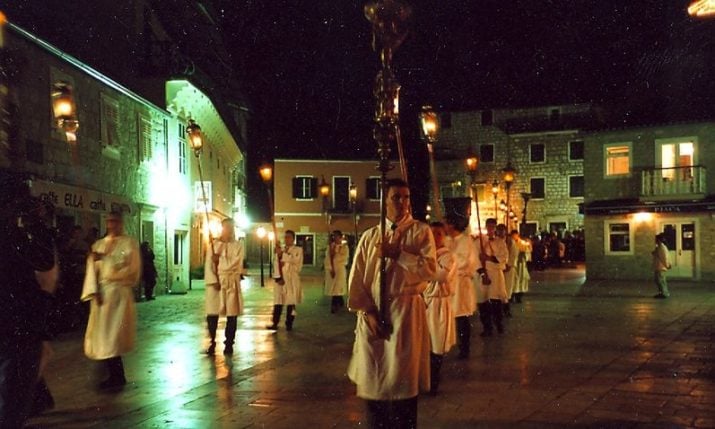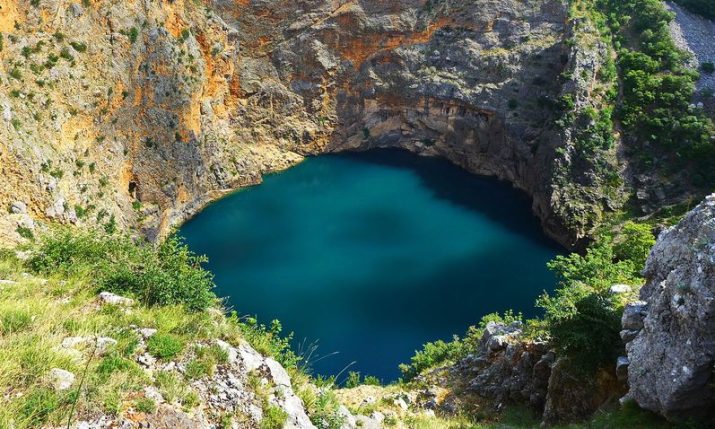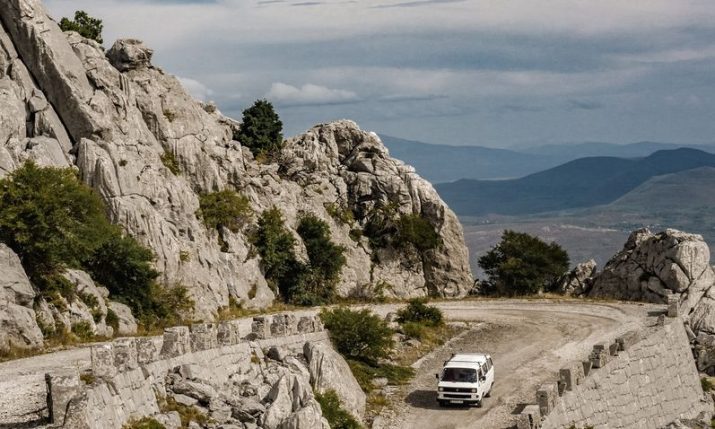Biokovo-Imotski Lakes Geopark: Croatia’s newest UNESCO gem
- by croatiaweek
- in News
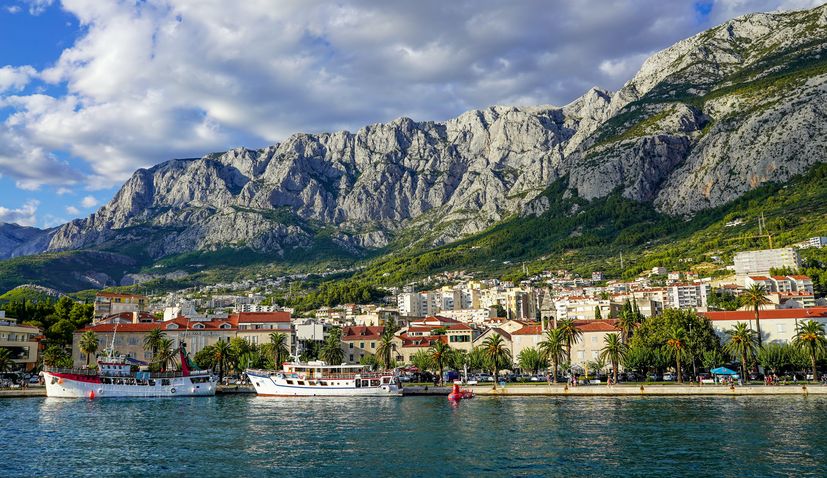
Biokovo above Makarska
The UNESCO World Geoparks Council accepted the nomination of the Biokovo-Imotski Lakes Geopark as a UNESCO World Geopark during the first meeting of the 8th session held on September 4th and 5th, 2023, in Marrakech, Morocco.
The UNESCO World Geoparks Council convenes once a year to assess whether new applications meet the necessary standards, and their decision is forwarded to the UNESCO Executive Board for official approval.
The official inclusion of the Biokovo-Imotski Lakes Geopark on the list of UNESCO World Geoparks is expected in April 2024.
With this decision, the doors are now open for the “Biokovo-Imotski Lakes” Geopark to become the third UNESCO Geopark in the Republic of Croatia, joining the “Papuk Nature Park” and the “Vis Archipelago.”
The Ministry of Economy and Sustainable Development and the National Commission for UNESCO Geoparks of the Republic of Croatia congratulate the Biokovo Nature Park, the City of Imotski, all municipalities, and residents of this area on this crucial step towards recognition.
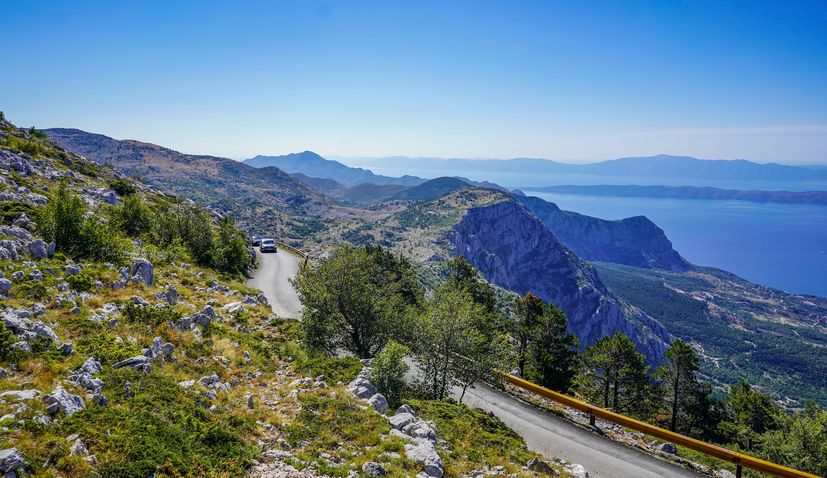
Biokovo Nature Park
The Biokovo-Imotski Lakes Geopark is a remarkable region filled with a rich cultural, historical, and natural heritage. It boasts a wide variety of habitats, plant and animal species, and an impressive array of geological formations formed over different periods of Earth’s history.
One of its notable features is the Blue Lake, which has an elliptical shape and depths ranging from 300 to 500 meters. The water level in this lake fluctuates annually, sometimes reaching depths of up to 100 meters. Situated on the outskirts of the historic town of Imotski, the Blue Lake is a popular destination for swimming and a favorite gathering place during the summer. To reach it, you can descend along a winding path constructed in the early 20th century using the dry stone wall technique.
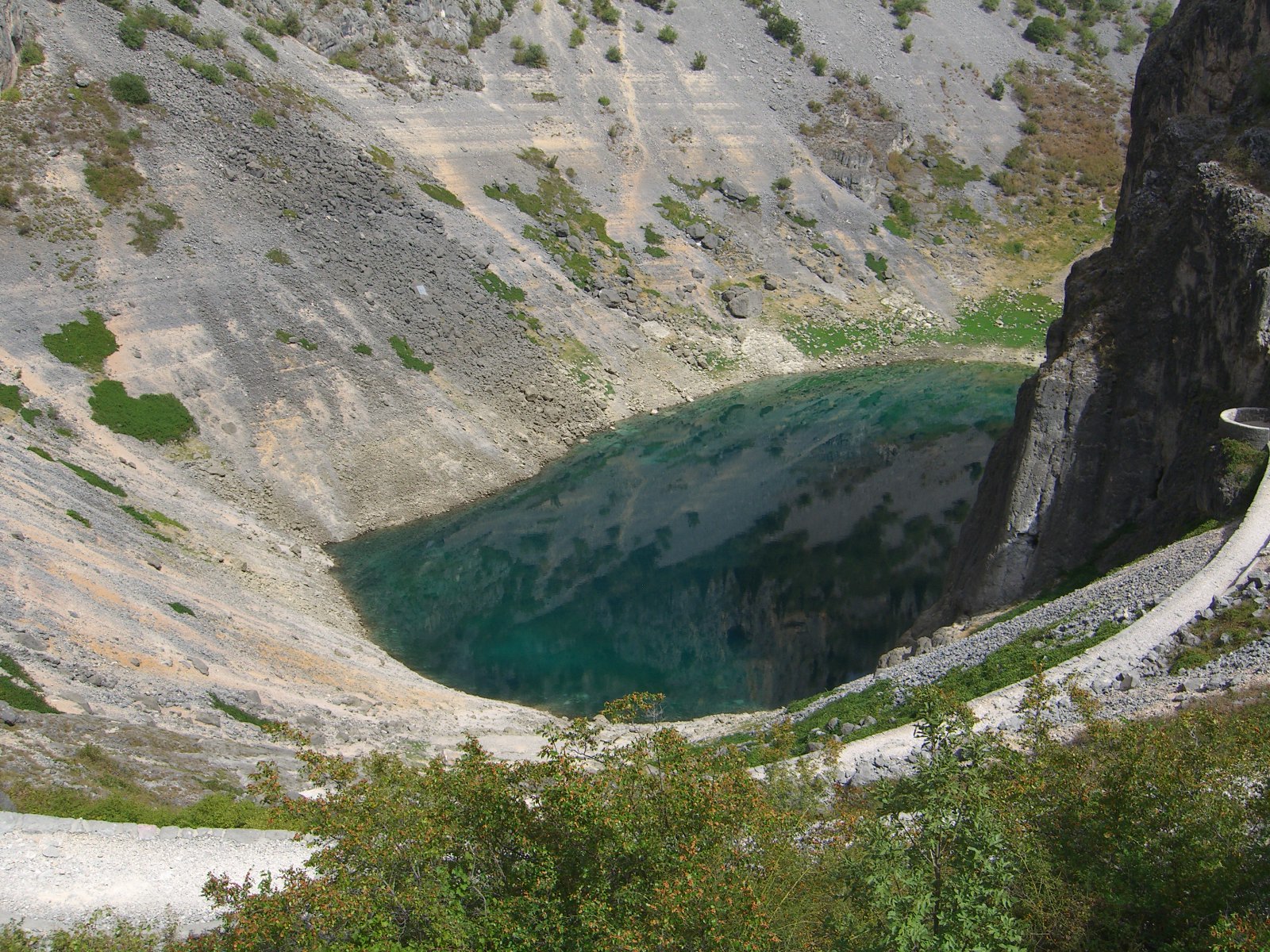
Blue Lake, Imotski (Photo credit: Dreizung/CC-BY-SA-3.0)
Another remarkable hydro-morphological wonder in the area is located 1.5 kilometers northwest of Imotski. This deep fissure, surrounded by striking red rocks, partially contains water and is aptly named due to the way it reflects the crimson hues of its surroundings. Experts consider it one of Europe’s deepest water fissures, and it was designated as a Monument of Nature in 1971. Research conducted in 1998 revealed that the lake’s bottom is situated 6 meters below sea level, classifying it as a depression.
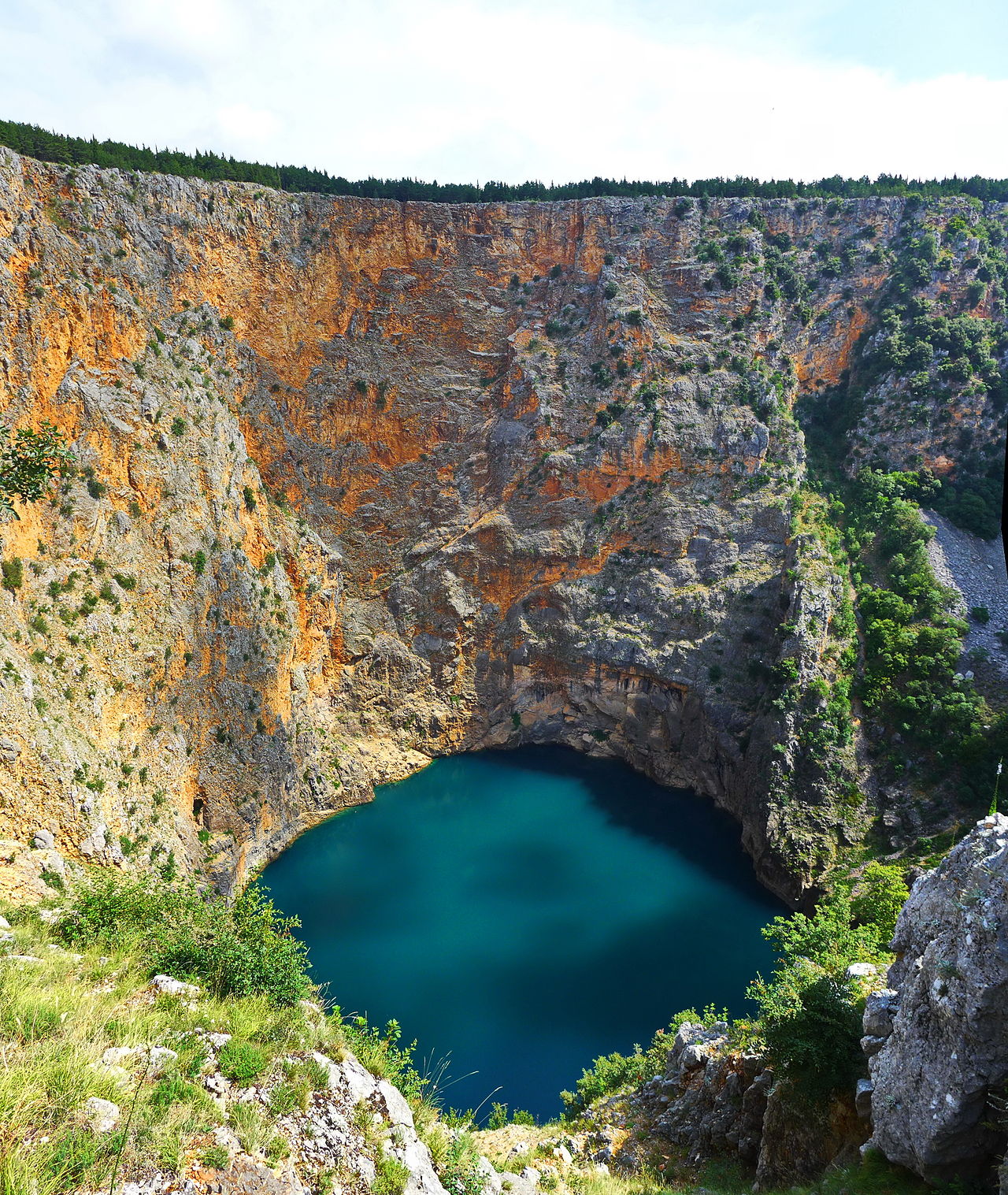
Red lake Imotski (Photo credit: Peter1936F/CC BY-SA 4.0)
Biokovo, the highest mountain range in Croatia’s coastal region, rises to an impressive altitude of 1,762 meters above sea level at its highest point, St. George Peak. Its unique geomorphology, exceptional biodiversity, and breathtaking landscapes have led to its designation as a protected nature park. It forms a part of the expansive karst region of the Dinaric Alps, renowned globally for its distinct karst formations, which create a vital climatic and physical barrier between the coastal areas and the inland region where the Imotski Lakes are situated.
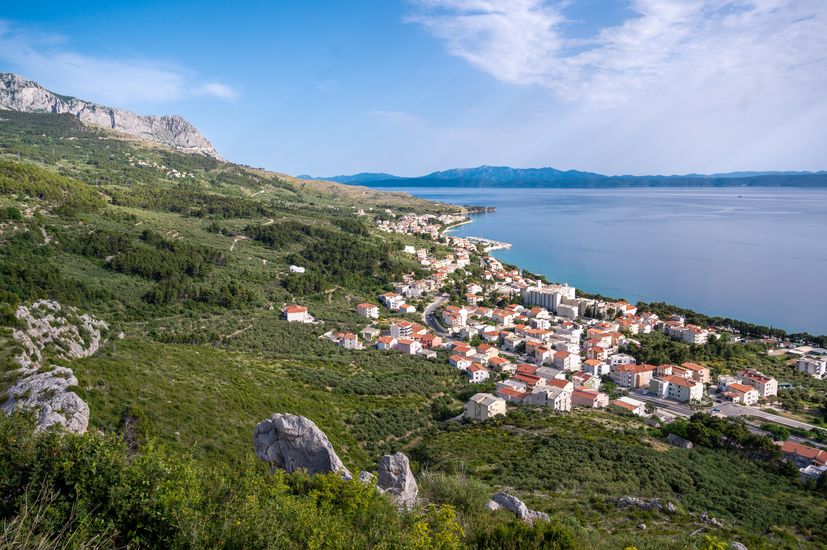
Biokovo above Makarska
The geologically and geomorphologically unique area of the Dinaric karst in the Biokovo Nature Park and the Imotski region receives a strong boost for the sustainable development of the local community through this global recognition.

